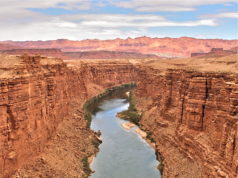
The money will come from the company’s oil tanker
subsidiary, Polar Tankers, and is proposed to be used for three
specific projects: to re-establish a salt marsh and remove 350 feet of
bulkheads near
The spill was not directly responsible for some of
the ecological problems the money would address, but state and federal
environmental managers have to “look at what things we can do that will
give us the greatest chance of recovery in that area,” said
fine, a reflection of the size of the accident and the way the company
handled its aftermath. The company continued to maintain it was not
responsible even after Coast Guard officials traced the spill’s
chemical footprint to oil from the 899-foot Polar Texas.
“I think that when a company is responsible for spilling up to 7,000 gallons of crude of oil, that’s pretty significant,” said
A
It is still not known precisely how much oil the
tanker spilled, only that it was between 1,000 and 7,200 gallons. But
the event reverberated through state government, the Coast Guard and
even prompted a U.S. Justice Department investigation, though no
charges were ever brought.
For months,
largest crude-oil producer, insisted that the Polar Texas could not
have been responsible. But Ecology Department officials later said they
suspected that the tanker unintentionally discharged oil while taking
on ballast water to add weight.
not publicly stated it was at fault, but “somehow I doubt that they
would be paying these amounts if they weren’t pretty sure that they
were the cause,” said
The spill occurred at night, perhaps as early as
The oil spread as far south as the Tacoma Narrows and hit beaches along Colvos Passage on the west side of
beaches required cleanup. Ecology officials said the spill ultimately
harmed several species of salmon and forage fish and shellfish as well
as birds.
“What we’re talking about here is were there damages
to natural resources, and the answer is ‘Absolutely,'” said Hart. “And
the citizens of
Criticism of the cleanup also prompted then-Gov.
at strategic locations for emergency call-outs; aerial searches at
night now include infrared devices so oil can be spotted in the dark;
and the state has adopted new ways to communicate and coordinate with
private spill-response teams.
Since that time, budget issues have led to
significant cuts in the spills program, which reduced its staff by
eight people. Budget negotiations in
this month are expected to include debate about whether to stabilize
funding for the program using part of the same tax on hazardous waste
and oil refineries that some have called on to fight stormwater
pollution.
———
(c) 2010, The Seattle Times.
Visit The Seattle Times Extra on the World Wide Web at http://www.seattletimes.com/
Distributed by McClatchy-Tribune Information Services.














